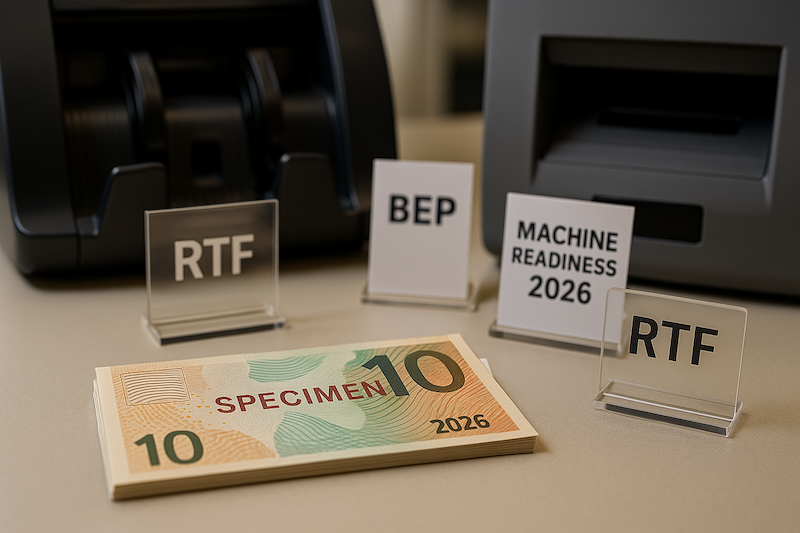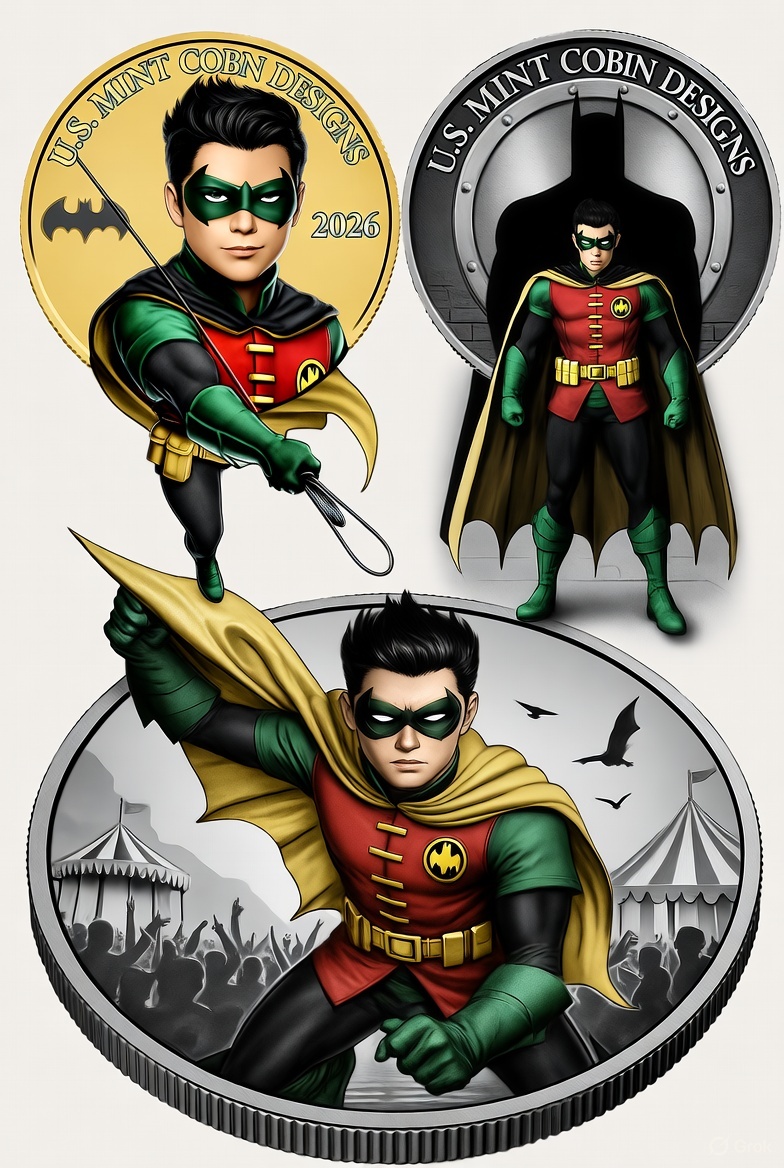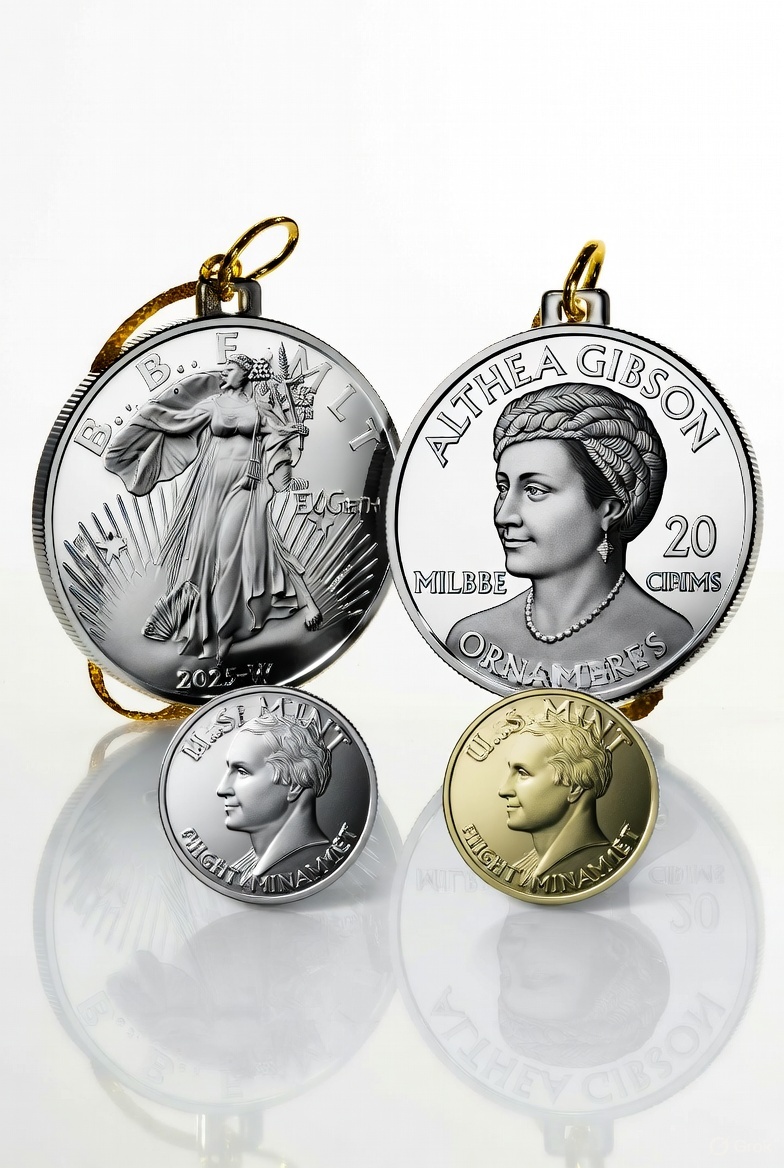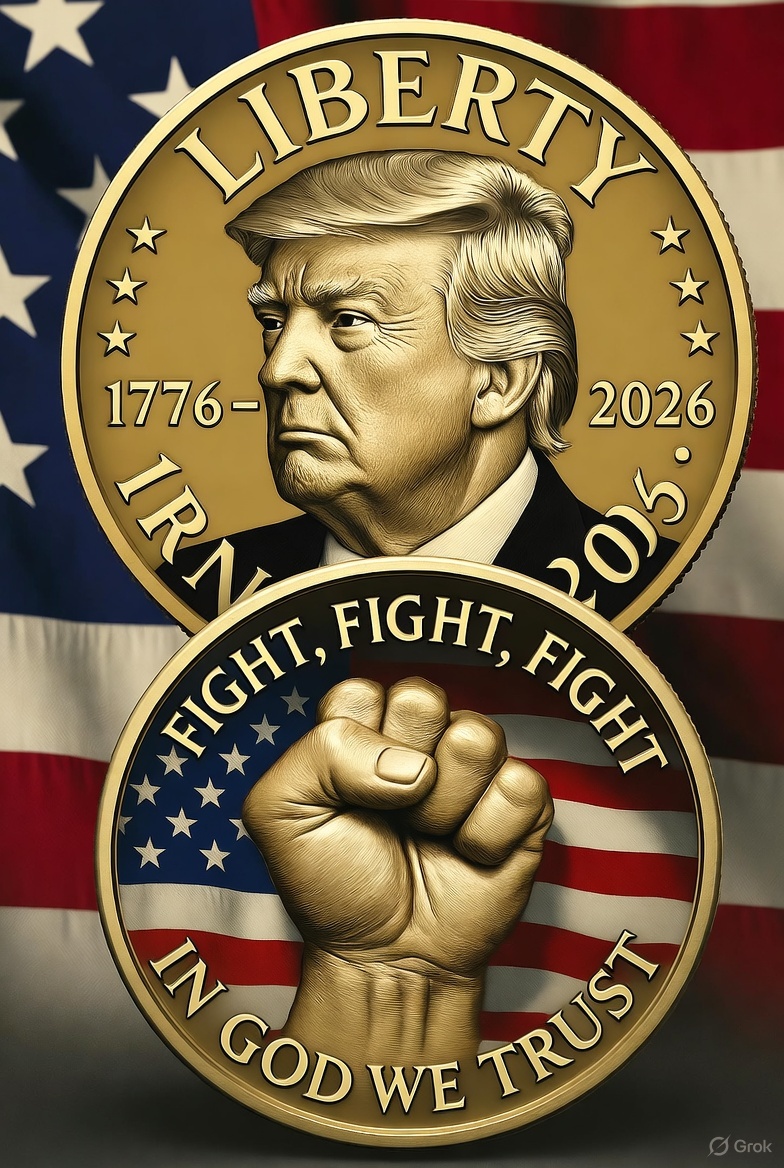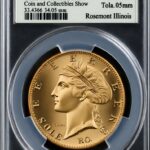Hook: A new family of U.S. notes begins in 2026—and it won’t just change how our money looks. It will change how we authenticate, handle, and value cash across the entire ecosystem, from coin shops and cash rooms to ATMs and vending. The rollout starts with the $10 note in 2026, followed by the $50 (2028), $20 (2030), $5 (2032) and $100 (2034), a sequence the Bureau of Engraving and Printing (BEP) says was set to address security risks and counterfeiting trends.
TL;DR: The U.S. banknote redesign 2026 launches a decade-long series with new security and accessibility features (including a raised tactile feature), a tightly choreographed machine-readiness program for 10+ million devices worldwide, and a six-to-eight-month public education window before designs are revealed. Financial institutions relying on legacy ATM/TCR/counter gear should expect firmware and hardware updates—or replacements.
Why the U.S. banknote redesign 2026 matters now
Modern counterfeiting has moved well beyond old-school offset. High-resolution scanning, accessible design software, and increasingly convincing materials mean security has to be both overt (easy for the public) and covert (hard for criminals). BEP emphasizes that redesign’s primary purpose is security, supported by “exclusive, state-of-the-art security features” developed over years of R&D and integration testing before any note is issued.
At the policy level, the Advanced Counterfeit Deterrence (ACD) Steering Committee—Treasury, BEP, the Federal Reserve Board/System and the U.S. Secret Service—sets the path from concept to production. Treasury’s orders and historical GAO/OIG reviews underline ACD’s role in recommending features and schedule, with the Secretary approving final designs.
From a market lens, counterfeit prevalence estimates vary, but the direction is clear: while some media and whitepapers cite a $70–$200 million range in circulation at any time, recent Federal Reserve/Atlanta Fed analysis suggests a lower stock—about $15–$30 million outstanding (roughly 1 in 80,000–1 in 40,000 notes). The variance reflects different methodologies and timeframes; either way, a more secure note family is warranted.
What’s confirmed—and what isn’t
The denomination sequence & timeline (official)
- $10 in 2026 → $50 in 2028 → $20 in 2030 → $5 in 2032 → $100 in 2034.
Accessibility and security priorities
- Raised tactile feature (RTF) planned for the new family to provide meaningful access for blind/low-vision users, alongside high-contrast numerals and color cues. BEP’s program details and recent status updates confirm the RTF focus and the $10 note’s 2026 production target.
- Coin-world reporting has referenced the first “Catalyst” generation $10 note and tactile features by 2026 (production readiness), with the Federal Reserve responsible for distribution timing.
Design reveals (not yet public)
BEP states designs are typically made public 6–8 months before release to avoid aiding counterfeiters and to maintain marketplace confidence. Don’t expect early “concept art”; designs evolve until manufacturing is locked.
Machine readiness: the biggest practical hurdle
More than 10 million banknote-accepting/processing machines worldwide touch U.S. currency. The final step before issuance is to ensure machines accept the new notes flawlessly. BEP provides non-monetized samples of new designs to Banknote Equipment Manufacturers (BEMs) and works with the Federal Reserve’s Currency Technology Office (CTO) to drive acceptance decisions and updates.
The banking and retail cash world is not fully ready. Industry coverage (including a sponsored advisory from Giesecke+Devrient) warns that many institutions still run legacy ATMs, TCRs and counters, risking false rejects of genuine notes or missed counterfeits if upgrades lag. Their guidance: audit infrastructure now, plan software/firmware updates, and replace incompatible devices ahead of the 2026 wave.
“Spotlighting the redesign is good security policy,” one currency-processing executive told me, “but unless branches and cash centers upgrade, they won’t use the new features. Machine-readability is where security meets reality.” (Industry viewpoint consistent with BEP/CTO/BEM readiness processes.)
U.S. banknote redesign 2026: features we can reasonably expect
What’s public:
- RTF for accessibility (rollout beginning with the $10).
- A mix of overt and covert anti-counterfeiting features, refined through long testing cycles and public education prior to issue.
What’s plausible (but not confirmed for U.S. adoption):
- Global suppliers continue to innovate—e.g., nanotechnology-based security threads with striking visual effects. These technologies exist in the market but are only examples of what’s possible; the U.S. has not disclosed its chosen set.
What to avoid assuming:
Portrait changes, color schemes, micro-optics placement, and substrate changes remain undisclosed. Follow BEP’s public-education releases when they arrive.
Timeline at a glance (collectors & cash pros)
| Milestone | What it means | Who’s involved |
|---|---|---|
| -18 to -12 months | Final integration/acceptance testing; BEM/CTO machine prep | BEP, BEMs, Federal Reserve CTO |
| -8 to -6 months | Public design reveal; training and education ramp | BEP, US Currency Education Program |
| Launch window | Initial production; Fed determines distribution timing | BEP, Federal Reserve |
| Post-launch | Mixed circulation with old designs for years | Full cash cycle stakeholders |
Implications for each audience
Coin & paper-money collectors / numismatists
- Transitional varieties and star notes from early runs often attract attention; however, don’t speculate blindly. Wait for BEP/Fed specifics on print facilities and runs.
- Education window (6–8 months pre-launch) is prime time to learn visual checks and prepare exhibit/teaching materials for clubs and shows.
Coin and currency industry professionals
- Update acceptance gear (counters/sorters, note validators) and refresh counterfeit-detection SOPs.
- Train staff to recognize RTF and any publicly disclosed overt features; integrate new checks into buy-desk routines.
Financial institutions and cash-intensive merchants
- Conduct a fleet audit of ATMs/TCRs/counters; map devices by firmware version and upgrade path. Sponsored industry guidance is clear: some fleets will need outright replacement.
- Coordinate with vendors early to avoid parts/service bottlenecks during the 2026–2028 ramp.
General public
- Expect both old and new designs to circulate together for years. The U.S. Currency Education Program will provide simple how-to guides near launch.
Risk & reward: a balanced view
Benefits
- Stronger counterfeit deterrence and higher machine-readability across a modernized cash cycle.
- Accessibility gains via raised tactile features, large numerals, and color cues—long advocated by disability organizations.
Risks
- Operational friction if upgrades lag (false rejects, manual workarounds, customer friction).
- Market confusion if unofficial “design leaks” circulate before the official 6–8-month reveal. Trust only BEP/Fed channels.
Data points worth bookmarking
- Official schedule: $10 (2026), $50 (2028), $20 (2030), $5 (2032), $100 (2034).
- Machine footprint: 10M+ devices worldwide need acceptance updates.
- Accessibility: RTF targeted for the new family; $10 on schedule for 2026 production.
- Distribution authority: Federal Reserve determines when new notes enter circulation.
- Counterfeit prevalence: estimates range widely—$15–$30M (Fed/Atlanta Fed research) to $70–$200M(media/whitepapers). Methodologies differ; uncertainty is inherent.
Expert insights (paraphrased)
- BEP on public timing: Releasing designs too early aids counterfeiters and creates confusion; 6–8 months before issuance balances awareness with security.
- Accessibility advocates: The raised tactile feature is the key step toward truly independent denomination, joining large numerals and color.
- Cash-processing vendors: Legacy gear will miss the mark unless firmware and optics are updated for the new feature set.
FAQs
Will the 2026 $10 show its final design soon?
Not until roughly 6–8 months before issue. Early “concepts” are not released.
What exactly is the raised tactile feature?
A touch-detectable element (applied via intaglio) to help blind/low-vision users identify denominations. Implementation begins with the $10 and extends to other denominations that law allows.
Who decides when the $10 actually hits my wallet?
The Federal Reserve determines distribution timing once BEP completes production and all acceptance testing is in place.
Will my ATM or bill acceptor take the new notes on day one?
It should—if the device’s firmware/optics were updated during BEP/CTO/BEM readiness. Institutions that skipped upgrades risk rejects or mis-authentications.
What about portraits or specific vignettes?
No official art has been released. Assume nothing until BEP’s public education phase.
Action checklist (for FIs, retailers, and dealers)
- Inventory devices (ATM/TCR/counters/validators) and confirm each model’s 2026 update path.
- Schedule upgrades and training to avoid the pre-launch crunch. BEP
- Refresh counterfeit procedures—align staff with the new overt checks once public education begins.
- Communicate to customers—post signage near rollout to reduce confusion at points of sale.
Bottom line
The U.S. banknote redesign 2026 is bigger than a cosmetic refresh. It’s a multi-year, multi-agency security program designed to keep the dollar trusted worldwide, with measurable gains in accessibility and a heavy emphasis on machine readiness. For collectors, it opens a new chapter of modern note varieties; for banks and merchants, it’s a deadline to get hardware and training right; for the public, it promises cash that is easier to authenticate and use.
Call-to-action: Subscribe to BEP’s and the U.S. Currency Education Program’s updates, book device upgrades with your vendors now, and plan staff/customer education around the official 6–8 month reveal window leading up to the 2026 $10launch.
